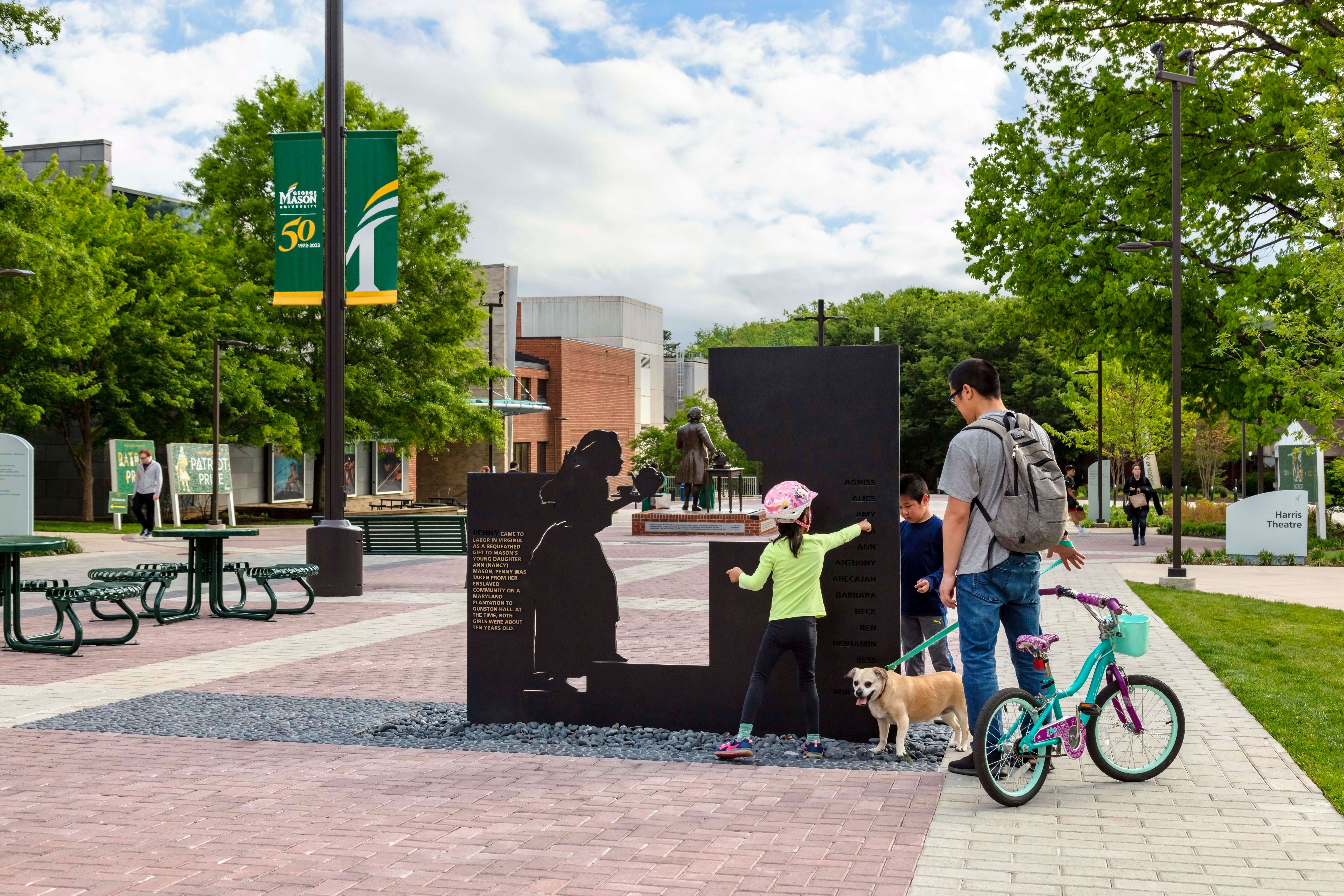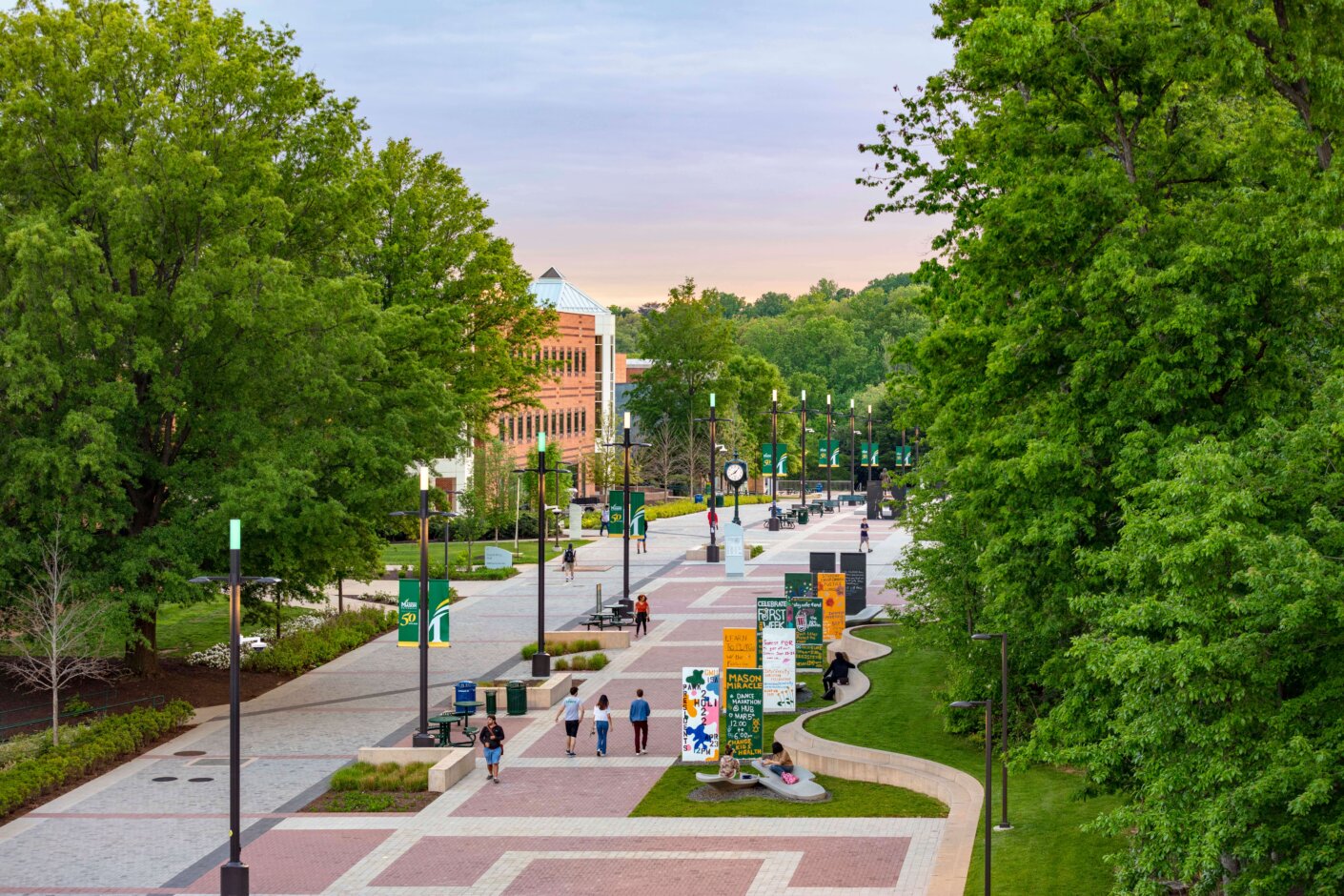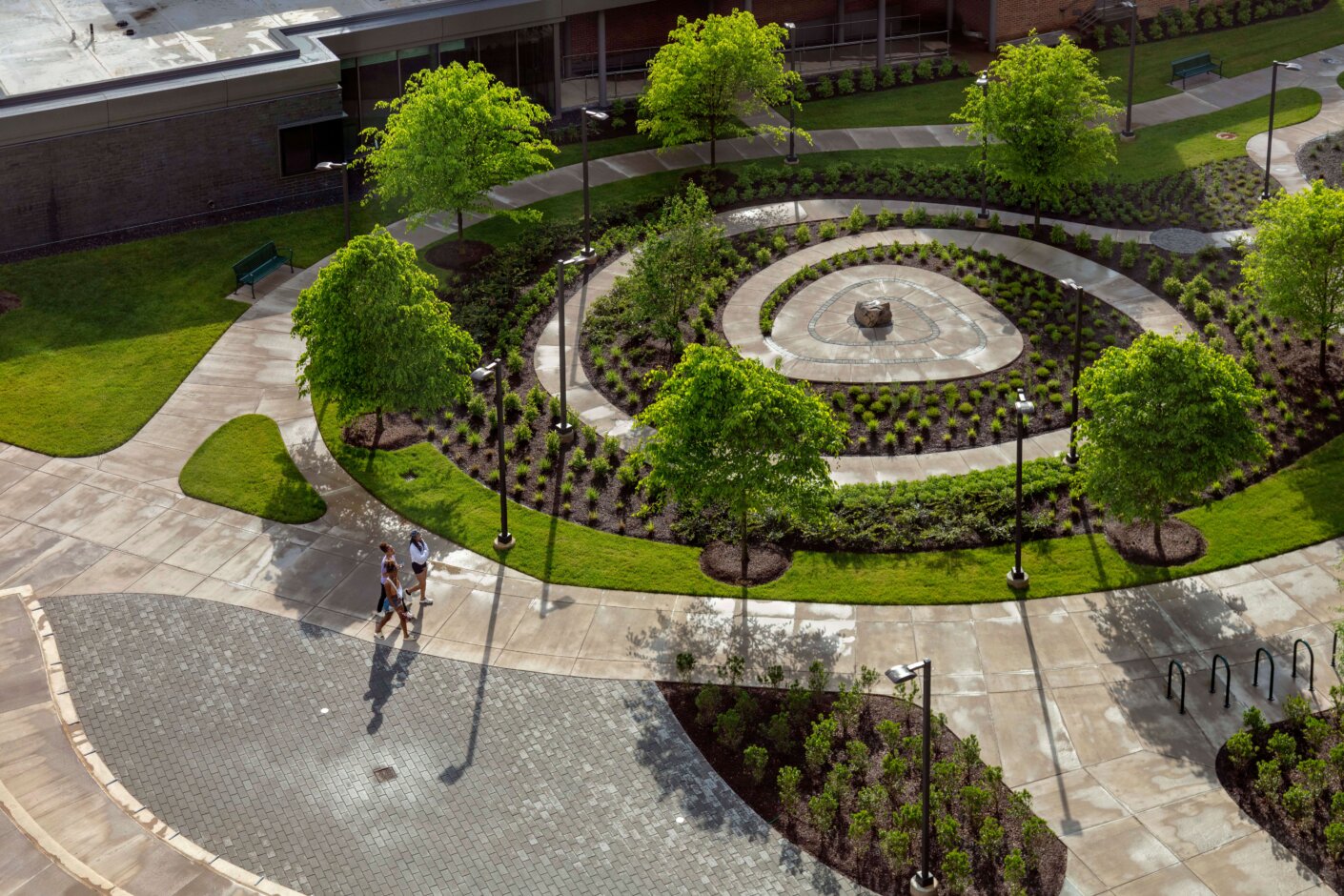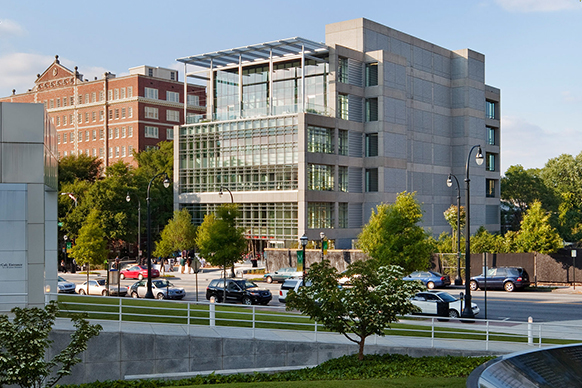Perkins&Will recently completed the design of a powerful outdoor plaza that honors George Mason University’s namesake, a founding father and slaveholder, and the people he enslaved whose voices and stories have never been heard. Spanning over 1,000 feet and located at the center of the university’s campus, the renovated Wilkins Plaza offers a place that encourages discovery and dialogue, where disparate and contradictory voices are heard for shared understanding.
The creation of the Enslaved People of George Mason Memorial gives voice to the history of enslaved people on the nearby plantation of the university’s namesake. The memorial reflects George Mason’s contradictory history as both a founding father fighting for liberty while holding 100 people as slaves and offers the space for imagining history yet to be made. Adjacent to the plaza is The Labyrinth and a meditation garden that offers a quiet place for reflection and contemplation.
“The renovated Wilkins Plaza expresses and reinforces GMU’s values and focus on inquiry and discussion while acknowledging the mixed legacy of our namesake,” said Cathy Pinskey, Capital Programs Director in Facilities at GMU who oversaw the project. “The idea behind the Enslaved Peoples Memorial was to create a dialogue between a historical figure and those who had no voice in a way that wouldn’t villainize but contextualize his legacy and tell the other side of the story.”




